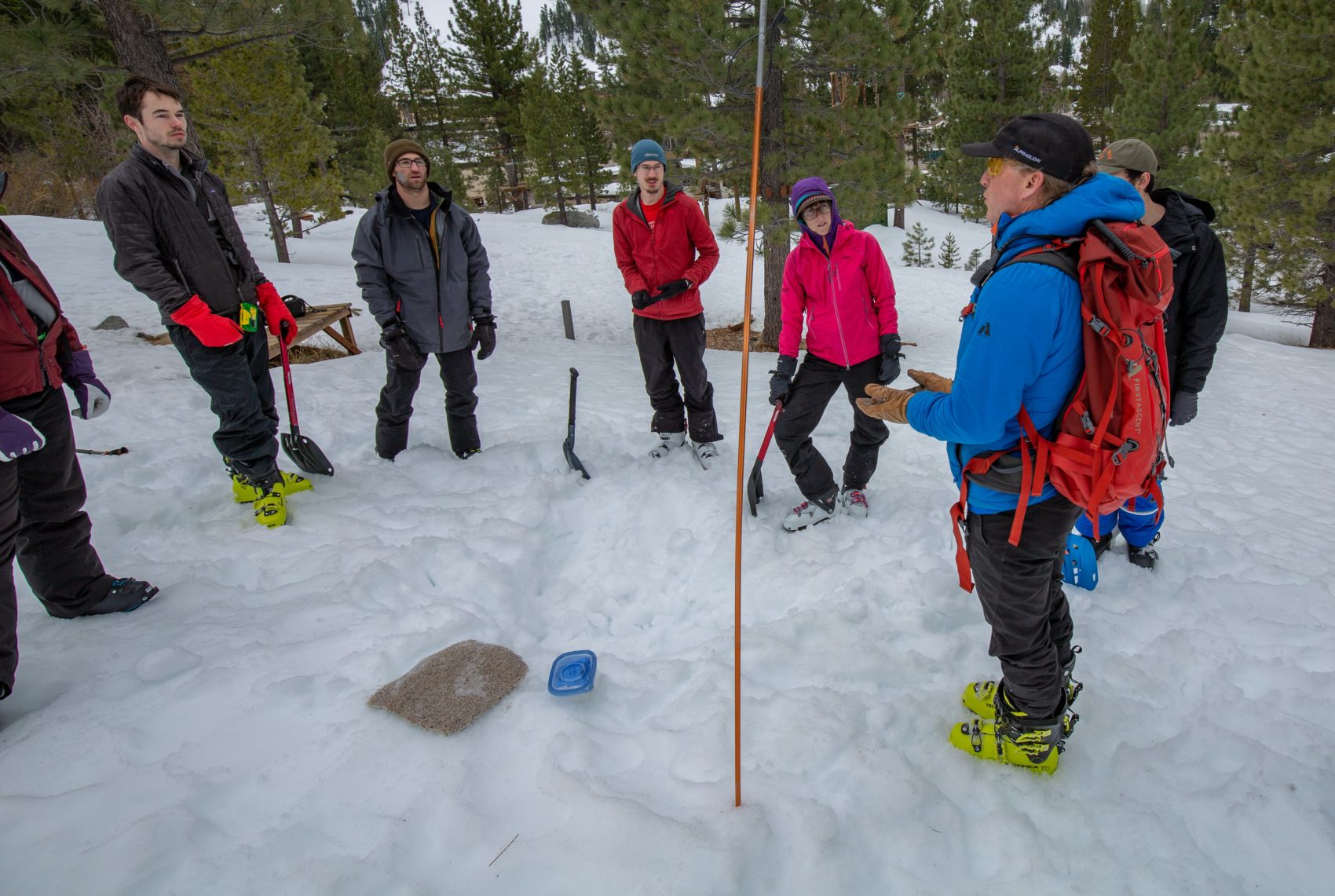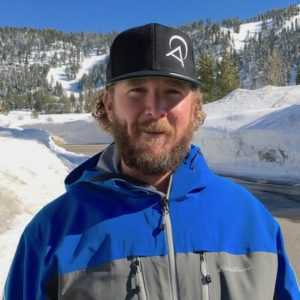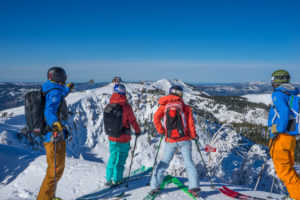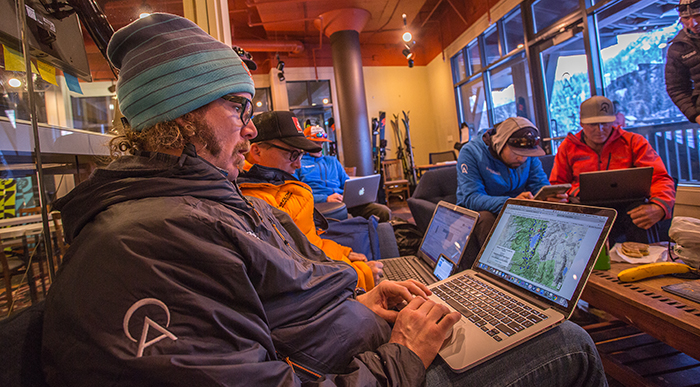
Brought to you by Alpenglow Expeditions
Squaw Valley, CA, based Alpenglow Expeditions just opened up booking for their 2022 AIARE 1 classes for those of you who like to plan ahead.
View this post on Instagram
We caught up with AIARE instructor Ben Weaver and asked him a couple of questions about this season’s avalanche training program at Alpenglow Expeditions.
Can you start by introducing yourself? What’s your background? What drew you to teaching AIARE courses?
I am a ski guide and avalanche course instructor at Alpenglow Expeditions. I am in my third season at Alpenglow and loving it. I was a professional ski patroller at Mt. Hood Meadows in Oregon for five years. I was part of the Snow Safety team and started teaching avalanche awareness courses to our guests. I started with the avalanche awareness courses and then moved through the AIARE instructor and course leader training. I really enjoy meeting new people and getting to provide a framework for them to pursue their backcountry riding.
Give us the rundown on the three-day schedule of the AIARE 1 course. (i.e. Why is it so long? Is there really so much to learn?)
Short answer, yes there is a lot to learn. The leadership at AIARE puts out a curriculum that all providers use as the foundation of the AIARE avalanche courses. One of the goals at Alpenglow is to help people to become better mountain travelers. On our 3-day AIARE courses, we have a mix of classroom lectures, group exercises, and of course, getting outside in the snow. The AIARE 1 and AIARE 2 courses will both be 3 days. AIARE 1 we are introducing the AIARE framework and some basic rescue skills/equipment introduction. The three-day AIARE 2 gives students some more introduction of snow science and a focus on the AIARE framework with direction and supervision from professional guides. Both levels are going to include lots of emphasis on the human factors involved in backcountry travel. Don’t forget, there is the 1-day avalanche rescue course that fits in there as well. A great opportunity to spend a full 8 hour day practicing with equipment and skills that need to be dialed-in should a rescue be necessary.

Who should take an AIARE course? What can they expect to learn in an AIARE 1?
Anyone that is going to regularly recreate in the winter months in the backcountry should get some avalanche training. The AIARE curriculum is based on “Prepare, Plan, Ride, & Debrief”. This is the updated version of the “Decision-Making Framework” being rolled out this season. Day 1 will be laying the foundation by introducing the AIARE framework for planning a backcountry trip. Then we get to some classroom lectures on Snowpack, avalanche formation, and types, and REQUIRED equipment for backcountry travel in the winter. We will spend the afternoon getting out our avalanche rescue gear and going over group response to an avalanche. Day 2 we continue with morning class sessions of lectures and group exercises. In the afternoon we break into smaller groups and head out into the field on a short ski tour to get our hands in the snow. We demonstrate observations and note-taking and putting our planning to the test. There will be some short homework on night #2. Day 3, we meet in the classroom to go over our homework from the night before. After a short morning in the classroom, the class participants break into small teams and head outside for a few hours of riding. The third day is an opportunity to put our trip plan into practice and find the best riding for that day’s conditions. We will meet at the end of the day to practice our debrief skills. Not to be overlooked, where were we in danger? How could we improve? Where was the best riding?
What does a person need to take the course?
The AIARE 1 is an introductory course for backcountry winter travel. There is always a broad range of people with different riding abilities and experience outdoors. It works because we are starting from the beginning. The idea is to give all participants a standardized framework to head out into the backcountry. At Alpenglow we have rental equipment for those participants just getting into it. If you are someone that has your own equipment, great! We can help answer any questions you may have or give you some fresh ideas on what to carry or how to use it. Also, continue previewing the http://www.sierraavalanchecenter.org before coming to AIARE weekend. It is full of great information and will help students navigate it while competing for coursework over the weekend.

What kind of hazards should we be worried about in the backcountry?
Humans. Being self-aware and aware of others and our environment. During our three-day courses, we do a lot of talking about where to find the given day’s avalanche problems, snowpack information, and weather observations/forecast. A participant in the AIARE courses will be taught how to best use these websites for gathering information and putting it into our tour plan for the day. Part of this process is to identify the Hazards for that day’s tour. These hazards can change day-to-day and it is important to identify and talk about them as a group.
What’s different about the snowpack in Tahoe versus other parts of the country?
Here in Tahoe, we are in a “Maritime” Snowpack. This is characterized by a deep snowpack and, relatively, warm temperatures. Different parts of the country can have more or less snow and warm or cooler temperatures. It is important to know that this is a “big picture” label and within these different snowpack climates there can be micro-climate zones that have many different characteristics in snow depth and temperatures.
What’s the next step after someone takes an AIARE 1?
Take the new skills and put them to use. Find or put together a group of riders, preferably with some sort of avalanche course training, and get outside. Prepare, Plan, Ride, and Debrief. Consider finding someone to act as a mentor or come back and spend the day with a guide. Getting experience with someone that has more experience is important to finding the goods and doing it with a solid risk management game.

What’s the AIARE program like for professionals? What courses do they take?
Last year there was a rollout of a PRO/REC split and two “paths” were created. Everyone takes the AIARE 1 and 1-day rescue course. After those two courses, there is a split. Professionals take a PRO-1 and complete the series with a PRO-2. As an AIARE instructor and course leader we have upper-level courses and then take the appropriate instructor/leader training. Every year we have to take some sort of continuing education. This could be attending a local/regional avalanche workshop or taking a professional rescue course.
What’s next for you Ben? What are you looking forward to this season?
I am excited to spend the winter in Tahoe with Alpenglow Expeditions. I will be working most of the winter teaching AIARE courses and ski guiding. I am midway through my AMGA ski guide certification track. In early March I will be attending the Advanced Ski Guide Course in LaGrave, France. In preparation for this course, I’ll be out in the skin track a bunch this winter. I look forward to seeing people there or possibly in an AIARE course.
CLICK TO BOOK YOUR AIARE 1
For information on any of our other expeditions check out our website. For any questions call our office at 877-873-5376 or send us an email info@alpenglowexpeditions.com. We hope to climb with you soon!